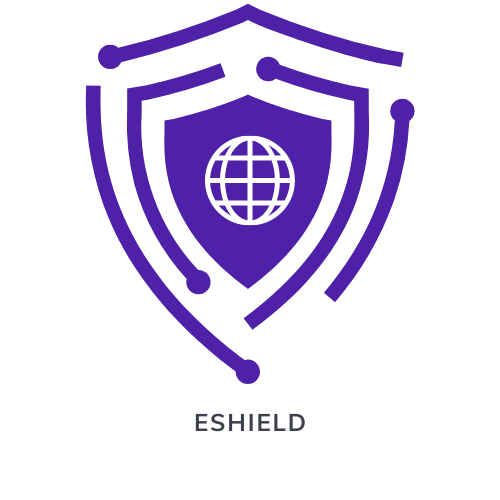“Every 11 seconds, a business somewhere in the world becomes the victim of a cyberattack — will yours be next?”
In 2025, cybercriminals are faster, smarter, and more organized than ever before. Traditional security methods are no longer enough to stop them. The real question is — do you have a SIEM tool powerful enough to see threats before they strike?
Security Information and Event Management (SIEM) tools are no longer optional — they’re essential. In this guide, we’ll explore the 15 most popular SIEM tools of 2025, compare their features, and help you decide which one is right for your business.
What is SIEM and Why It Matters in 2025?
A SIEM solution collects, analyzes, and correlates security data from multiple systems — such as firewalls, servers, applications, and endpoints — to detect potential threats in real time.
Key Benefits of SIEM Tools:
- Real-time threat detection before damage occurs
- Automated incident response to reduce downtime
- Compliance reporting for GDPR, HIPAA, PCI DSS
- Centralized log management for easier investigations
In short, modern SIEM tools give your security team the power to predict, prevent, and respond to cyber threats faster than ever.
How SIEM Tools Work
Most SIEM platforms follow a structured process:
- Log Collection – Aggregates logs from multiple data sources.
- Event Correlation – Links events to identify suspicious activity.
- Alerting – Sends notifications for critical security incidents.
- Reporting – Provides compliance and security performance reports.
Top 15 Most Popular SIEM Tools in 2025
1. Splunk Enterprise Security
Splunk is one of the most powerful and scalable SIEM platforms. Known for its big data analytics and custom dashboards, Splunk is trusted by large enterprises across industries.
Best For: Large enterprises handling high data volumes.
Key Features:
- AI-powered threat detection
- Customizable visual dashboards
- Real-time monitoring
Pros:
- Highly scalable
- Strong third-party integrations
Cons:
- High cost for small businesses
2. IBM QRadar
IBM QRadar is known for accurate event correlation and deep forensic capabilities. It’s ideal for businesses in compliance-heavy industries.
Best For: Regulatory compliance and complex networks.
Key Features:
- Automated investigation
- Pre-built compliance templates
- Incident forensics
Pros:
- Excellent compliance support
- Advanced analytics
Cons:
- Requires training for optimal use
3. Microsoft Sentinel
A cloud-native SIEM integrated with Azure. It’s cost-effective for companies already using Microsoft’s ecosystem.
Best For: Cloud-first organizations on Azure.
Key Features:
- AI-based threat detection
- Pay-as-you-go pricing
- Threat intelligence integration
Pros:
- Flexible costs
- Easy integration with Microsoft tools
Cons:
- Limited for non-Microsoft environments
4. ArcSight ESM (Micro Focus)
ArcSight specializes in real-time event correlation and is suitable for organizations managing complex IT environments.
Best For: Large enterprises with complex networks.
Key Features:
- Powerful correlation engine
- Custom rules for detection
- Scalable architecture
Pros:
- Handles high event volumes
- Highly customizable
Cons:
- Outdated interface compared to rivals
5. LogRhythm NextGen SIEM
LogRhythm offers integrated threat lifecycle management and advanced analytics.
Best For: Enterprises focused on rapid incident response.
Key Features:
- End-to-end threat detection
- Machine learning analytics
- Centralized log management
Pros:
- Comprehensive feature set
- Excellent customer support
Cons:
- Can be resource-heavy
6. SolarWinds Security Event Manager (SEM)
An affordable SIEM for small-to-medium businesses with easy deployment.
Best For: SMBs seeking simplicity.
Key Features:
- Out-of-the-box rules
- USB device monitoring
- Real-time alerts
Pros:
- Affordable pricing
- Easy to set up
Cons:
- Limited for large enterprises
7. Elastic SIEM
Built on the Elastic Stack, it’s popular with DevOps and open-source enthusiasts.
Best For: DevOps teams and open-source users.
Key Features:
- Flexible data visualization
- Machine learning models
- Real-time search capabilities
Pros:
- Open-source flexibility
- Cost-effective for startups
Cons:
- Requires technical expertise
8. Graylog Security
Graylog offers a log management-first approach and has both free and paid versions.
Best For: Organizations needing affordable SIEM.
Key Features:
- Log correlation and alerts
- Scalable storage
- Community support
Pros:
- Free version available
- Simple interface
Cons:
- Fewer enterprise features
9. ManageEngine Log360
An all-in-one SIEM tool with Active Directory auditing and compliance reporting.
Best For: Businesses needing user activity monitoring.
Key Features:
- AD change tracking
- Insider threat detection
- Built-in compliance reports
Pros:
- Covers multiple security layers
- Good value for money
Cons:
- Interface can feel dated
10. AlienVault USM (AT&T Cybersecurity)
A unified security platform that combines SIEM with vulnerability assessment and intrusion detection.
Best For: Mid-sized businesses needing multiple security tools in one.
Key Features:
- Threat intelligence updates
- Asset discovery
- Behavioral monitoring
Pros:
- Multi-layered security
- Easy deployment
Cons:
- Limited customization
11. FortiSIEM
From Fortinet, FortiSIEM integrates network visibility with SIEM capabilities.
Best For: Enterprises with Fortinet products.
Key Features:
- Network performance monitoring
- Automated remediation
- Asset inventory
Pros:
- Strong Fortinet integration
- Good scalability
Cons:
- Limited third-party integrations
12. Exabeam Fusion SIEM
Known for user and entity behavior analytics (UEBA) and automation.
Best For: Automation-focused security teams.
Key Features:
- UEBA for insider threat detection
- Cloud and on-premises support
- Threat hunting tools
Pros:
- Strong automation
- Scales easily
Cons:
- Pricing can be high
13. Chronicle SIEM (Google Cloud)
A cloud-native SIEM that’s fast and scalable, leveraging Google’s infrastructure.
Best For: Enterprises using Google Cloud.
Key Features:
- Unlimited data retention
- High-speed search
- Integrated threat intelligence
Pros:
- Extremely fast queries
- Cloud scalability
Cons:
- Google Cloud-centric
14. RSA NetWitness Platform
Offers deep packet inspection and strong analytics.
Best For: Enterprises needing advanced threat hunting.
Key Features:
- Endpoint detection and response
- Network forensics
- Malware analysis
Pros:
- Powerful analytics
- Strong forensic capabilities
Cons:
- Complex setup
15. Sumo Logic Cloud SIEM
A fully managed cloud SIEM with strong log analytics capabilities.
Best For: Cloud-native organizations.
Key Features:
- Continuous intelligence
- Real-time monitoring
- Threat investigation
Pros:
- Easy to use
- Scalable in the cloud
Cons:
- Less suitable for on-premises environments
Comparison Table – Most Popular SIEM Tools of 2025
| Tool | Best For | Strength | Pricing Model |
|---|---|---|---|
| Splunk | Large Enterprises | Big Data Analytics | Subscription |
| IBM QRadar | Compliance | Compliance Templates | Per Data Ingest |
| Microsoft Sentinel | Cloud Environments | Azure Integration | Pay-as-you-go |
| ArcSight ESM | Complex Networks | Event Correlation | Subscription |
| LogRhythm | Incident Response | Threat Lifecycle | License |
| SolarWinds SEM | SMBs | Easy Deployment | Subscription |
| Elastic SIEM | DevOps | Open Source | Free/Subscription |
| Graylog | Low-Cost SIEM | Log Management | Free/Paid |
| ManageEngine Log360 | User Monitoring | AD Auditing | License |
| AlienVault USM | Multi-Layer Security | Threat Intelligence | Subscription |
| FortiSIEM | Fortinet Users | Network Visibility | Subscription |
| Exabeam Fusion | Automation | UEBA | Subscription |
| Chronicle SIEM | Google Cloud | Fast Search | Pay-as-you-go |
| RSA NetWitness | Advanced Hunting | Forensics | Subscription |
| Sumo Logic | Cloud Native | Continuous Intelligence | Subscription |
How to Choose the Right Most Popular SIEM Tools
- Check scalability for future growth.
- Review integration compatibility with your stack.
- Understand pricing model before commitment.
- Ensure compliance features for your industry.
Conclusion
Cybersecurity in 2025 demands faster detection, smarter analytics, and proactive defense. The right SIEM tool will not just detect threats — it will help you stay one step ahead of cybercriminals. Whether you’re a small business or a large enterprise, investing in the right SIEM platform is critical to your long-term security.
FAQs About SIEM Tools
Security Information and Event Management.
SolarWinds SEM or Graylog.
Yes, most provide ready-made compliance templates.
Yes, Elastic SIEM and Graylog offer free versions.
Microsoft Sentinel, Chronicle SIEM, or Sumo Logic.


